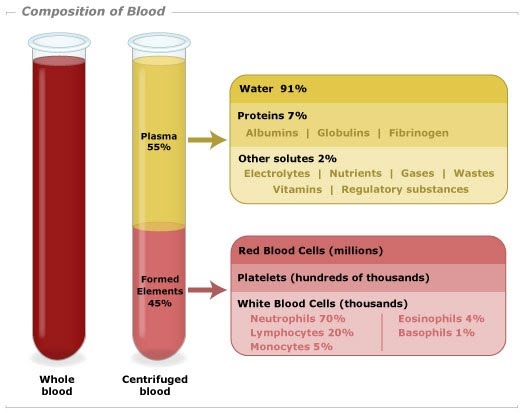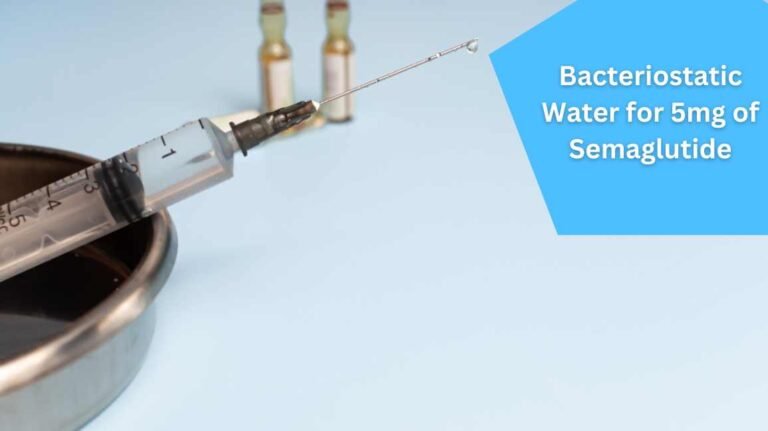An Introduction to Semaglutide and Its Administration
Semaglutide, a revolutionary medication transforming the lives of millions, has taken the medical world by storm. Administered through subcutaneous injection, this once-weekly injectable medication effectively manages type 2 diabetes and obesity. To ensure optimal efficacy and safety, proper reconstitution of semaglutide with bacteriostatic water (BW) is crucial.

Image: thealevelbiologist.co.uk
This comprehensive guide will delve into the intricacies of mixing semaglutide with BW, empowering you with the knowledge to administer the medication accurately and confidently. We’ll explore the what, why, and how, ensuring you have a clear understanding of the process.
Breaking Down the Basics: What is Bacteriostatic Water?
Bacteriostatic water, also known as BW, is a sterile and preservative-free solution. Unlike sterile water, which lacks preservatives, BW contains a small amount of benzyl alcohol, an antimicrobial agent that inhibits bacterial growth, extending its shelf life.
In the case of semaglutide, the use of BW serves a critical purpose. As a peptide-based medication, semaglutide is susceptible to bacterial contamination. The benzyl alcohol in BW acts as a shield, preventing microbial proliferation and ensuring the medication’s integrity and effectiveness.
Determining the Correct BW Volume: A Key Step
The amount of BW used for reconstitution is a crucial factor. Too little BW can result in an overly concentrated solution, potentially causing discomfort or irritation at the injection site. Conversely, excessive BW dilutes the semaglutide, reducing its potency and therapeutic efficacy.
The appropriate BW volume depends on the semaglutide strength. As a general rule, 1.2 ml of BW is used for 0.5 mg and 1.0 mg semaglutide vials, while 0.6 ml of BW is suitable for 2.0 mg vials. Always refer to the manufacturer’s instructions for the specific product you’re using.
Step-by-Step Reconstitution Process: A Precise Protocol
-
Gather your materials: Semaglutide vial, BW vial, 1 ml syringe, and 25-gauge or smaller needle.
-
Prepare the BW: Withdraw the necessary amount of BW from the vial. The exact volume will depend on the semaglutide strength.
-
Inject BW into semaglutide vial: Insert the needle attached to the syringe into the semaglutide vial and slowly inject the BW. Avoid forceful injection, as this can create foam.
-
Withdraw reconstituted solution: Once the BW is injected, gently swirl the vial to ensure the semaglutide is completely dissolved and mixed with BW. Draw the reconstituted solution back into the syringe.
-
Discard the needle and syringe: Properly dispose of the used needle and syringe as per your healthcare provider’s instructions.

Image: healthorskin.com
Expert Insights: Ensuring Safe and Effective Administration
-
Use a new needle: Always use a new needle for each injection to minimize the risk of contamination and infection.
-
Inject slowly: Inject the medication slowly, over 5-10 seconds, to reduce discomfort.
-
Avoid shaking: Shaking the vial can cause foaming, potentially affecting the accuracy of the dose.
-
Store properly: Refrigerate the reconstituted solution and discard any unused portion after 28 days.
How Much Bac Water To Mix With Semaglutide
Conclusion: Empowering You for Optimal Health
Understanding how to mix semaglutide with bacteriostatic water is an essential aspect of self-management for managing type 2 diabetes or obesity. By following the guidelines outlined in this comprehensive guide, you can ensure accurate reconstitution, optimize medication efficacy, and minimize potential risks.
Remember, accurate reconstitution not only enhances the effectiveness of your treatment but also safeguards your health and well-being. If you have any further questions or concerns, don’t hesitate to consult with your healthcare provider for personalized guidance.